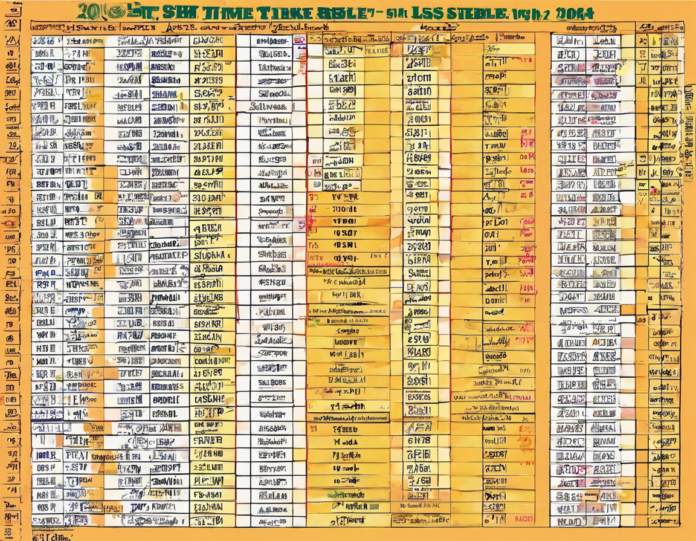Introduction
In the academic world, a well-structured time table is crucial to ensure effective time management and productivity. For fifth-grade students in 2024, having a well-thought-out time table can help them balance between their academic pursuits and extracurricular activities. This guide aims to provide a comprehensive overview of creating an ideal time table for fifth-grade students in the year 2024.
Understanding the Needs of Fifth-Grade Students
Fifth-grade students are at a crucial stage of their academic journey, where they are developing their study habits and learning to manage their time effectively. As they transition from lower grades to higher levels of education, it becomes essential to instill good time management skills early on. A structured time table can help them stay organized, focused, and on track with their studies.
Creating the Ideal Time Table
-
Define Goals and Priorities: Before creating a time table, it is important to define the academic goals and priorities of the student. This can include identifying subjects that require more focus, setting aside time for homework, and allocating time for extracurricular activities.
-
Include Breaks and Rest: It is crucial to include breaks and rest periods in the time table to avoid burnout and exhaustion. Short breaks between study sessions can help improve focus and concentration.
-
Allocate Time for Each Subject: Divide the time table into specific slots for each subject. This allows students to allocate sufficient time for studying each subject, ensuring a balanced approach to learning.
-
Incorporate Extracurricular Activities: Apart from academics, it is important to include time for extracurricular activities such as sports, arts, and hobbies. These activities play a vital role in the overall development of the student.
-
Review and Adjust Regularly: A time table should be flexible and subject to regular review and adjustments. As the academic year progresses, the needs and priorities of the student may change, requiring modifications to the time table.
Tips for Effective Time Management
- Set Realistic Goals: Encourage students to set achievable goals that are in line with their abilities and interests.
- Prioritize Tasks: Teach students to prioritize tasks based on their importance and deadlines.
- Eliminate Distractions: Minimize distractions such as electronic devices and noise during study hours.
- Seek Help When Needed: Encourage students to seek help from teachers or parents when they face challenges with their studies.
5 Frequently Asked Questions (FAQs)
- How many hours of study time should a fifth-grade student allocate each day?
-
On average, fifth-grade students can benefit from 1-2 hours of dedicated study time each day, excluding homework.
-
Should weekends be included in the time table for study?
-
Weekends can be included for lighter study sessions or revision, but it is also important to allow time for relaxation and family activities.
-
How can parents support their fifth-grade students in following a time table?
-
Parents can help by creating a conducive study environment at home, assisting with time table creation, and offering encouragement and motivation.
-
What should be included in a daily study routine for fifth-grade students?
-
A daily study routine can include time for homework, revision of lessons, reading, and practicing skills in subjects like math and language arts.
-
How can students maintain balance between academics and extracurricular activities in their time table?
- Students can allocate specific time slots for both academics and extracurricular activities in their time table, ensuring a balanced approach to their overall development.
In conclusion, a well-designed time table is an essential tool for fifth-grade students in 2024 to achieve academic success and personal growth. By following the guidelines outlined in this guide and incorporating effective time management strategies, students can stay organized, focused, and motivated throughout the academic year.

